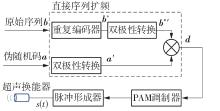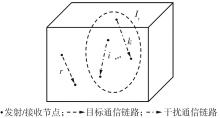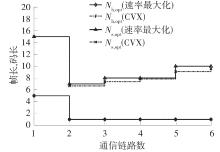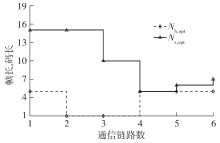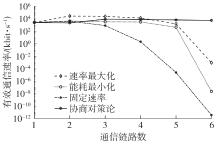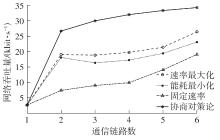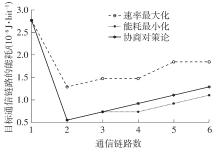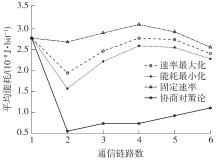| 1 |
孙倩倩,周守君 .我国远程医疗的现状、问题及发展对策[J].南京医科大学学报(社会科学版),2022,22(1):25-30.
|
|
SUN Qianqian, ZHOU Shoujun .The development status problems and countermeasures of China's telemedicine[J].Journal of Nanjing Medical University(Social Sciences),2022,22(1):25-30.
|
| 2 |
MOHAMED M, MAISELI B J, AI Y,et al .In-body sensor communication:Trends and challenges[J].IEEE Electromagnetic Compatibility Magazine,2021,10(2):47-52.
|
| 3 |
SANTAGATI G E, MELODIA T .A software-defined ultrasonic networking framework for wearable devices[J].IEEE/ACM Transactions on Networking,2017,25(2):960-973.
|
| 4 |
OKUNEV Y, ARNESON M, BANDY W,et al .Signal processing in acoustic systems for the capsule endoscopy[C]∥Proceedings of the 2011 IEEE Signal Processing in Medicine and Biology Symposium (SPMB).Brooklyn,NY:IEEE,2011:1-5.
|
| 5 |
WANG Q, GUAN Q, CHENG J,et al .Ultrasonic indexed modulation and multiple access for intra-body networks[J].IEEE Transactions on Communications,2021,69(1):108-120.
|
| 6 |
TABAK G, YANG S, MILLER R J,et al .Video-capable ultrasonic wireless communications through biological tissues[J].IEEE Transactions on Ultrasonics,Ferroelectrics,and Frequency Control,2021,68(3):664-674.
|
| 7 |
ELISABETTA C S, LAURA G .Impulse response analysis of an ultrasonic human body channel[J].Computer Networks,2020,171(193):1-13.
|
| 8 |
SANTAGATI G E, MELODIA T, GALLUCCIO L,et al .Ultrasonic networking for E-health applications[J].IEEE Wireless Communications,2013,20(4):74-81.
|
| 9 |
刘娇蛟,王倩倩,马碧云 .基于直扩超宽带的超声波人体通信技术仿真[J].华南理工大学学报(自然科学版),2020,48(3):18-23.
|
|
LIU Jiaojiao, WANG Qianqian, MA Biyun .Simulation of ultrasonic human body communication technology based on DS-UsWB[J].Journal of South China University of Technology (Natural Science Edition),2020,48(3):18-23.
|
| 10 |
SANTAGATI G E, MELODIA T, GALLUCCIO L,et al .Medium access control and rate adaptation for ultrasonic intrabody sensor networks[J].IEEE/ACM Transactions on Networking,2015,23(4):1121-1134.
|
| 11 |
SANTAGATI G E, DAVE N, MELODIA T .Design and performance evaluation of an implantable ultrasonic networking platform for the internet of medical things[J].IEEE/ACM Transactions on Networking,2020,28(1):29-42.
|
| 12 |
WANG Q, GUAN Q, MA B,et al .Direct-sequence ultrasonic wideband technology for intra-body communications[J].IEEE Communications Letters,2019,23(10):1744-1747.
|
| 13 |
WIN M Z, SCHOLTZ R A .Ultra-wide bandwidth time-hopping spread-spectrum impulse radio for wireless multiple-access communications[J].IEEE Transactions on Communications,2000,48(4):679-689.
|
| 14 |
BOYD S, VANDENBERGHE L .凸优化[M].王书宁,许鋆,黄晓霖,译.北京:清华大学出版社,2013:207-224.
|
| 15 |
MUTHOO A .Bargaining theory with applications[M].[S.l.]:Cambridge University Press,1999:40-72.
|
| 16 |
刘娇蛟,韦岗 .基于加权协商对策论异构网络快速无线传输的速率分配算法[J].电子学报,2012,40(7):1471-1475.
|
|
LIU Jiaojiao, WEI Gang .A game-theoretic rate allocation with minimized transmission time over heterogeneous wireless access networks[J].ACTA Electronica Sinica,2012,40(7):1471-1475.
|
| 17 |
SANTAGATI G E, MELODIA T .Experimental evaluation of impulsive ultrasonic intra-body communications for implantable biomedical devices[J].IEEE Transactions on Mobile Computing,2017,16(2):367-380.
|
| 18 |
REYNDERS B, POLLIN S .Chirp spread spectrum as a modulation technique for long range communication[C]∥2016 Symposium on Communications and Vehicular Technologies (SCVT).Mons,Belgium:IEEE,2016:1-5.
|
